JavaScript seems to be disabled in your browser. For the best experience on our site, be sure to turn on Javascript in your browser.

Make Your Other Emails Jealous
Receive our newsletters and special promotions
Review: World History Detective from The Critical Thinking Co.
We have used The Critical Thinking Co . for other curriculum {Editor in Chief} and have absolutely loved their strategy to “empower the mind” . Curriculum is created not for cookie-cutter fill-in-the blank memory answers but rather an emphasis on raising thinkers.
From their website: “Critical thinking is identifying and evaluating evidence to guide decision making. Critical thinkers use in-depth analysis of evidence to make decisions and communicate his beliefs clearly and accurately.”
- Prehistory {neanderthals}
- Ancient Civilizations
- Medieval Civilizations
- Early American Civilizations
The first few chapters my 6th grade son mentioned, “they’re talking about evolution.” We have used many different types of history and science books, secular and non-secular. It is a discussion we usually save to wrap-up our lessons. Thankfully, this curriculum does not harp on evolution.
World History Detective Book One, Ancient and Medieval Civilizations Grade 6-12 is set up to read one page of information and then answer ten reading comprehension questions.
Each paragraph and each sentence in the reading portion lists a corresponding letter and number to easily find answers to the comprehension questions. The first nine questions are multiple choice answer and number ten is a written response asking “why or why not”, “explain” , etc. and a printed reminder, “please use complete sentences to answer the question.”
A “concept map” follows majority of the reading comprehension questions. This is the first time my 6th grader has filled out a concept map and I appreciated the new opportunity. The concept map page offers a “word bank” to fill in answers.
Other lessons include a geographical map, timeline, Venn Diagram, and/or black and white images.
My son was a bit disappointed with the history lessons because he focused on the “detective” and the Sherlock Holmes hat on the cover of this book. He automatically assumed we’d be on scavenger hunts, checking longitude and latitude for more clues, or traveling around like Carman Sandiego. He wanted to find clues and somehow crack difficult codes. I had to explain numerous times a detective uses critical thinking skills to solve answers just like he was doing for each lesson.
I did point out he was behaving like a detective because we “analyzed” information from the reading to use our “critical thinking skills” to answer questions and then used that “evidence” to “prove” a point for the written response. However, he is somewhat stubborn and wanted an adventure with hands-on activities like we have studied history in the past. Unfortunately he did not like this book as much as I did.
I think the age range for this book is appropriate. Especially for some slightly graphic details. My son did not like the lesson on China and the description of the Mongols cutting horse veins and drinking blood.

- I did feel it was a bit too easy to fall into a habit of relying on the question’s letter and number references than truly build reading comprehension skills.
- The concept maps are fantastic as well as the written response question area. I used that section for our “daily writing assignments”.
- The lessons are thorough.
- Good curriculum to explain how ideas and trade shape our history.
Stef Layton is a homeschool mom to two energetic boys. They spend their time outside in sunny Florida or field tripping to see it all in person. Stef shares these adventures and hands-on learning activities on Twitter .


- Arts & Crafts
- Music & Activities
- Health & Safety
- Kids Kitchen

World History Detective®
By the critical thinking co.™.

WHD includes geographical maps, timelines, and concept maps, and develops critical thinking skills in lessons that teach the roles that technology, power, institutions, ideas, and trade play in shaping history.
Other products by The Critical Thinking Co.™

Search products
- Classroom Activity Books
Manufacturer Details
The critical thinking co.™.

- Joyful Moments
- Reading Support
Tuesday, March 17, 2015
Critical thinking co.: world history detective book 1 {review}.

- West Africa
- East Africa
- Native Americans

No comments:
Post a Comment
See what's trending

All the Seasons Adventure Printable Pack
Subscribe to our newsletter & receive all the seasons adventure packet with a bonus christmas ideas page.
Our warehouse will be closed Friday, 3/29. All orders placed after 2PM EST Thursday 3/28 will be fulfilled Monday, April 1st.

Description
- Additional Info
- Reviews (0)
- Publisher Info
What makes World History Detective® different from other world history books is the integration of critical thinking into the content lessons. The questions in this book require deeper analysis and frequently ask for supporting evidence from the lesson. This in-depth analysis produces greater understanding, which results in better grades and higher test scores. Over time, students who practice critical thinking learn to apply it throughout their education and life. This book also develops reading comprehension and writing skills.
Students begin by analyzing a lesson. Next, they apply critical-thinking skills to answer multiple choice and short essay questions. Finally, students support their answers by identifying evidence learned from the lesson. World History Detective® includes geographical maps, timelines, and concept maps. It develops critical-thinking skills in lessons that teach the roles that technology, power, institutions, ideas, and trade played in shaping history.
Additional information
You must be logged in to post a review.
There are no reviews yet.
Critical Thinking Co. produces award-winning products that have helped students of all abilities achieve better grades and higher test scores with highly effective lessons that sharpen the mind as they teach standards-based reading, writing, mathematics, science, and history.
Critical Thinking Co. Products Are...
Fun, easy to use, and guaranteed to produce better grades and higher test scores; they include critical thinking in reading, writing, math, science and history lessons so students carefully analyze what they are learning.
Critical Thinking Co. Products Offer...
A deeper analysis to create deeper understanding, which results in better grades. They provide opportunities for students to practice critical thinking while learning to apply it throughout their education and life.
Critical Thinking Co. Products Don't...
Teach through drill and memorization or teach to the tests. Instead, they provide goals for students such as higher grades, top test scores, and problem-solving skills to meet all of life’s challenges.
World History Detective® from The Critical Thinking Company
Price: $36.99
- First Grade
- Second Grade
- Third Grade
- Fourth Grade
- Fifth Grade

Power Basics - Geometry Kit from Walch Publishing
Confidence can be a game changer for your students. If they feel like they are going to fail or look foolish, they will not try in school. Help your children gain confidence by using Power Basics - Geometry Kit from Walch Publishing to master geometry. This course is the best hands-on, critical thinking geometry course for your students to flourish! View Sample Pages
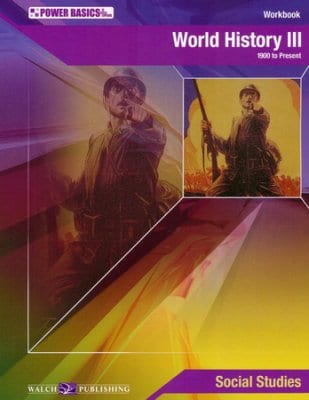
Power Basics - World History III Kit from Walch Publishing
"You must never be fearful about what you are doing when it is right." - Rosa Parks Teach your students the beauty of the past and the lessons they can learn from it. Challenge your students to dig into history and experience it in a new way when studying Power Basics - World History III Kit from Walch Publishing . This course uses the past to create a better future for your students. It provides hands-on, critical thinking activities to increase your students' wisdom!

Power Basics - Algebra Kit from Walch Publishing
Most students have a subject in school they find more difficult than others. If Algebra I is extra difficult for your student, look into using Power Basics - Algebra Kit from Walch Publishing . This workbook is the best hands-on, critical thinking math course for your struggling student. Make it easier for them by using this kit! View Sample Pages
Customer Reviews
Customers also purchased.
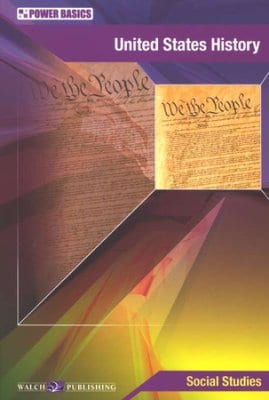
Power Basics - US History Kit from Walch Publishing
"We will remember every rescuer who died in honor. We will remember every family that lives in grief. We will remember." - George W. Bush on 9/11 The United States has gone through a lot of turmoil and a lot of struggles, but God's hand has always held this country. Teach your students all the events the US has experienced; teach your children the joy through the good and the mercy after the bad. Challenge your students to dig into history and experience it in a new way when studying Power Basics - US History Kit from Walch Publishing . This course provides hands-on, critical thinking activities to increase your students' wisdom.

Power Basics - Earth and Space Kit from Walch Publishing
Space is a fascinating subject that is full of unknowns. Teach your students about the mysterious galaxy we live in when studying Power Basics - Earth and Space Kit from Walch Publishing . Though this is not a biblically based course, it provides many facts about the world God created. Dive into the cosmos as you teach your children about their surroundings in an easy to understand, exciting way! View Sample Pages
Related products

Daily Skill-Builders Reading Grades 5-6 from Walch Publishing

English III: Writing Skills Kit from Paradigm Accelerated Curriculum
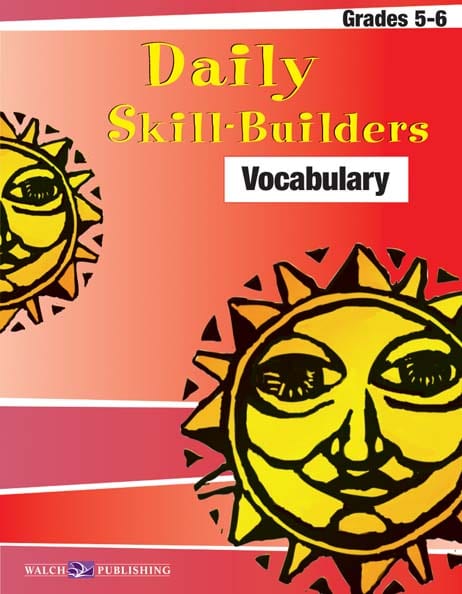
Daily Skill-Builders Vocabulary Grades 5-6 from Walch Publishing


English Grammar Skills Kit from Paradigm Accelerated Curriculum
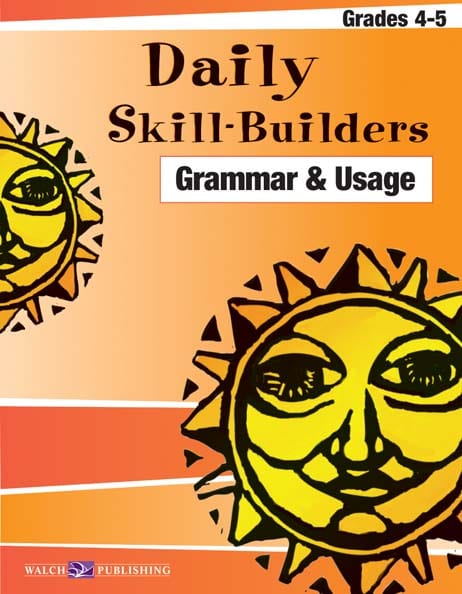
Daily Skill-Builders Grammar and Usage Grades 4-5 from Walch Publishing

Power Basics – US History Kit from Walch Publishing
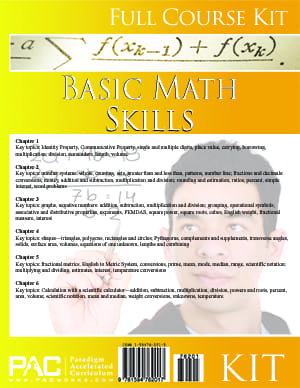
Basic Math Skills Kit from Paradigm Accelerated Curriculum

Daily Skill-Builders Spelling and Phonics Grades 4-5 from Walch Publishing
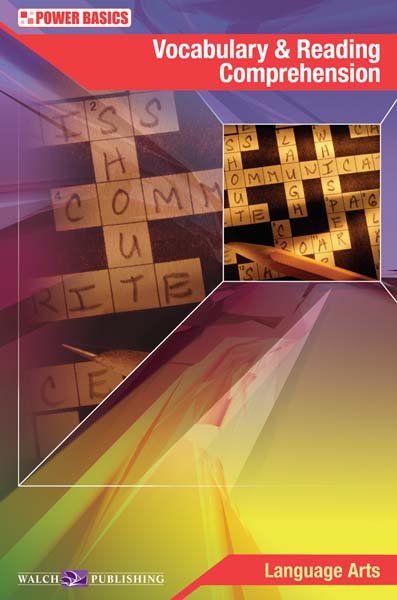
Power Basics – Vocabulary and Reading Comprehension Kit from Walch Publishing
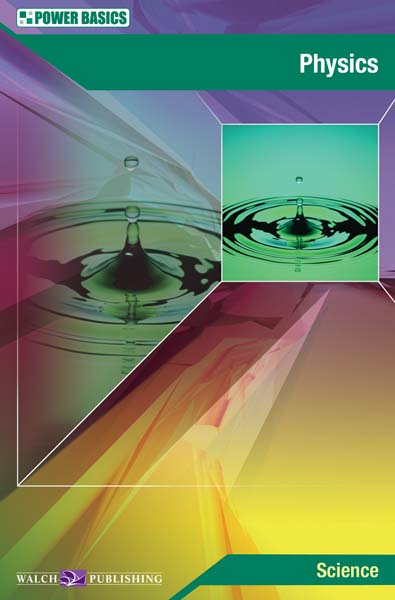
Power Basics – Physics Kit from Walch Publishing

Power Basics – World History I Kit from Walch Publishing
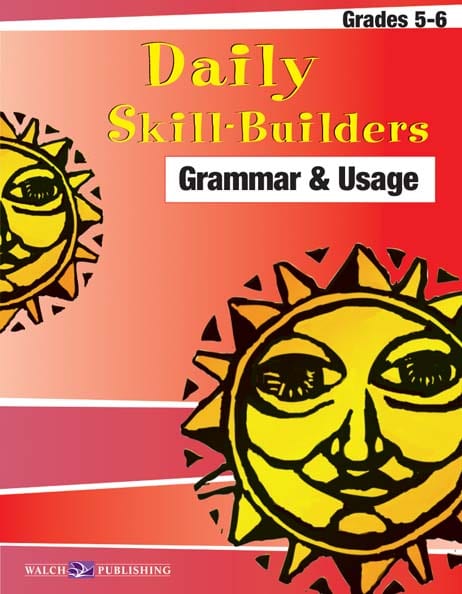
Daily Skill-Builders Grammar and Usage Grades 5-6 from Walch Publishing

Daily Skill-Builders Grammar and Usage Grades 3-4 from Walch Publishing
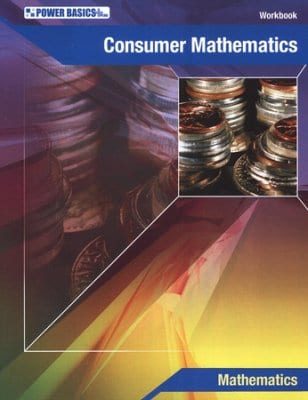
Power Basics – Consumer Math Kit from Walch Publishing

Daily Skill-Builders Vocabulary Grades 4-5 from Walch Publishing

Power Basics – Chemistry Kit from Walch Publishing
Special offers.
Get Updates and Special Offers from Curriculum Express
Free Shipping on Orders More Than $75 (Continental U.S. Only)

No products in the cart.
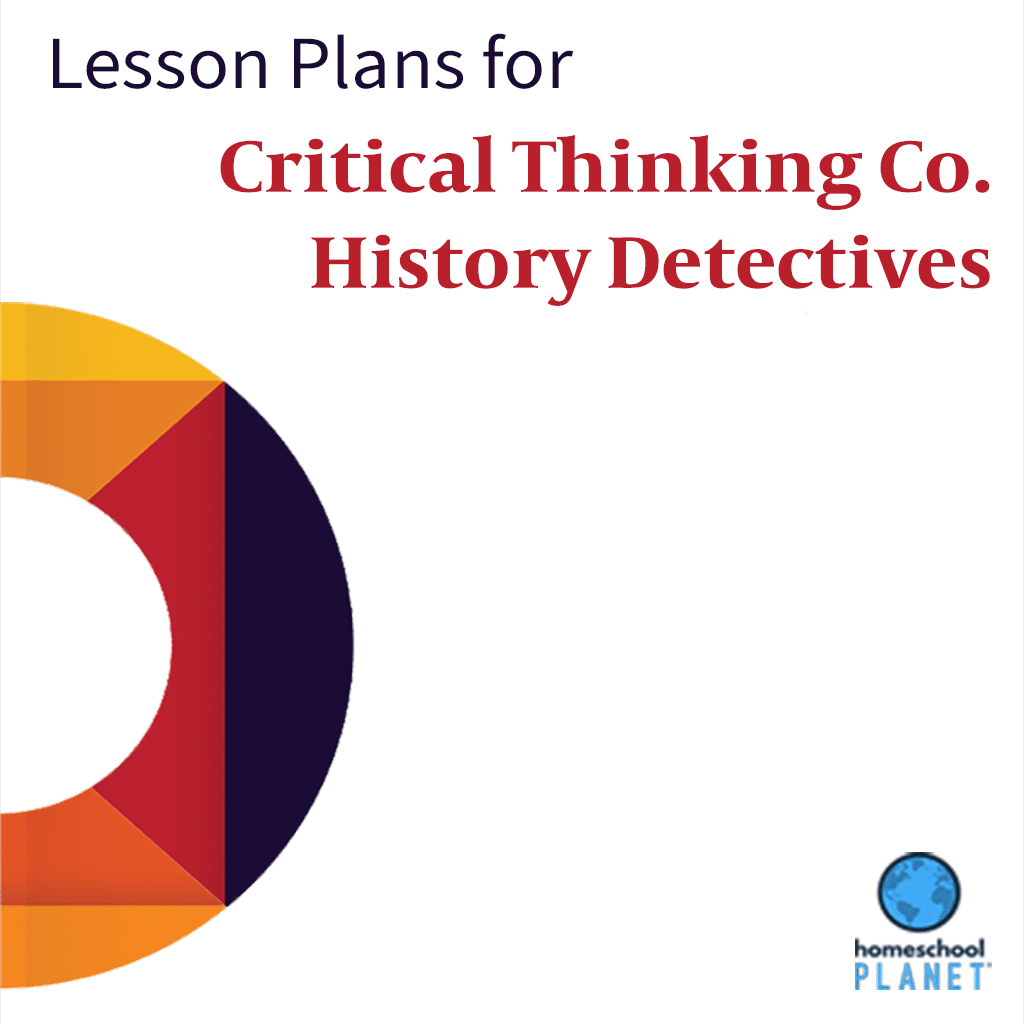
CTC: History Detectives
Seamlessly add your World History Detectives, U.S. History Detectives, Book 1, and U.S. History Detectives, Book 2 curriculum from The Critical Thinking Company to your homeschool schedule with these lesson plans for use with your Homeschool Planet subscription. Each lesson provides a passage students must read, followed by a series of questions. Questions are multiple choice, short answer, or short essay questions. Students are frequently asked to identify sentence evidence from the lesson that best supports the answer.
- What You Get
What You Get:
- The publisher-recommended course of study
- 1 school year lesson plan, covering all the assignments for your The Critical Thinking Company curriculum.
- Checkboxes for your students to check off as they complete their assignments, providing them with a sense of accomplishment and a permanent record of their achievement.
- History Detective Lesson Plan Bundle includes all 3 lesson plans!
- Automatic lesson plan updates as needed, with enhancements, link updates, etc. Note: You decide whether to apply the updates.
Please note: Curriculum is not included with your lesson plan and should be purchased separately. Select the "More Info" link located in each lesson plan option below for a description of the curriculum and an affiliate link to purchase the curriculum. These lesson plans are subject to copyright laws and cannot be used beyond those in your household. By “household” we mean a person or persons sharing the same single family housing unit such as a home, apartment, mobile home or condominium. You may reach us with any questions at [email protected] .
- Automatic rescheduling of assignments when “life happens”
- “Daily Digest” email reminders to help you and your child stay on track
- Grade your student’s work to recognize or reward completion.
- Track attendance for states where this is required.
- Generate reports, reminders, and much more!
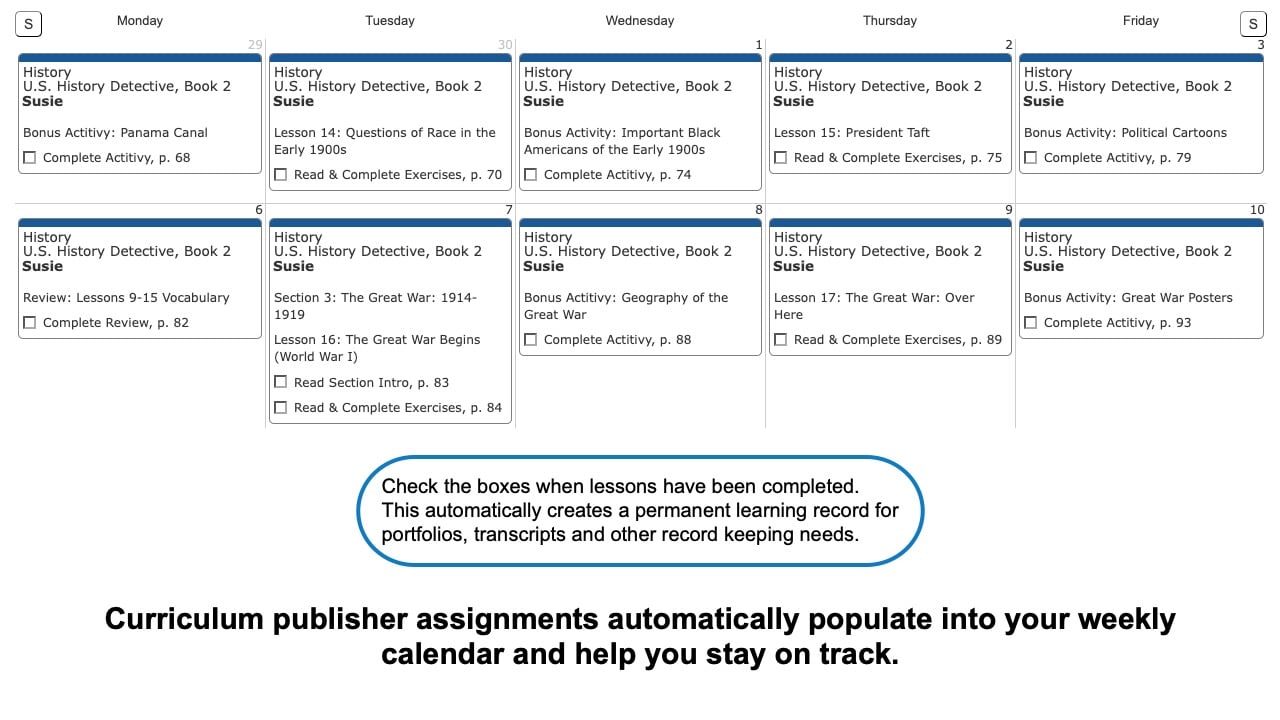
Insert/edit link
Enter the destination URL
Or link to existing content
GDPR Privacy Policy - Privacy Policy - Terms and Conditions

- Table of Contents
- Random Entry
- Chronological
- Editorial Information
- About the SEP
- Editorial Board
- How to Cite the SEP
- Special Characters
- Advanced Tools
- Support the SEP
- PDFs for SEP Friends
- Make a Donation
- SEPIA for Libraries
- Back to Entry
- Entry Contents
- Entry Bibliography
- Academic Tools
- Friends PDF Preview
- Author and Citation Info
- Back to Top
Supplement to Critical Thinking
This supplement elaborates on the history of the articulation, promotion and adoption of critical thinking as an educational goal.
John Dewey (1910: 74, 82) introduced the term ‘critical thinking’ as the name of an educational goal, which he identified with a scientific attitude of mind. More commonly, he called the goal ‘reflective thought’, ‘reflective thinking’, ‘reflection’, or just ‘thought’ or ‘thinking’. He describes his book as written for two purposes. The first was to help people to appreciate the kinship of children’s native curiosity, fertile imagination and love of experimental inquiry to the scientific attitude. The second was to help people to consider how recognizing this kinship in educational practice “would make for individual happiness and the reduction of social waste” (iii). He notes that the ideas in the book obtained concreteness in the Laboratory School in Chicago.
Dewey’s ideas were put into practice by some of the schools that participated in the Eight-Year Study in the 1930s sponsored by the Progressive Education Association in the United States. For this study, 300 colleges agreed to consider for admission graduates of 30 selected secondary schools or school systems from around the country who experimented with the content and methods of teaching, even if the graduates had not completed the then-prescribed secondary school curriculum. One purpose of the study was to discover through exploration and experimentation how secondary schools in the United States could serve youth more effectively (Aikin 1942). Each experimental school was free to change the curriculum as it saw fit, but the schools agreed that teaching methods and the life of the school should conform to the idea (previously advocated by Dewey) that people develop through doing things that are meaningful to them, and that the main purpose of the secondary school was to lead young people to understand, appreciate and live the democratic way of life characteristic of the United States (Aikin 1942: 17–18). In particular, school officials believed that young people in a democracy should develop the habit of reflective thinking and skill in solving problems (Aikin 1942: 81). Students’ work in the classroom thus consisted more often of a problem to be solved than a lesson to be learned. Especially in mathematics and science, the schools made a point of giving students experience in clear, logical thinking as they solved problems. The report of one experimental school, the University School of Ohio State University, articulated this goal of improving students’ thinking:
Critical or reflective thinking originates with the sensing of a problem. It is a quality of thought operating in an effort to solve the problem and to reach a tentative conclusion which is supported by all available data. It is really a process of problem solving requiring the use of creative insight, intellectual honesty, and sound judgment. It is the basis of the method of scientific inquiry. The success of democracy depends to a large extent on the disposition and ability of citizens to think critically and reflectively about the problems which must of necessity confront them, and to improve the quality of their thinking is one of the major goals of education. (Commission on the Relation of School and College of the Progressive Education Association 1943: 745–746)
The Eight-Year Study had an evaluation staff, which developed, in consultation with the schools, tests to measure aspects of student progress that fell outside the focus of the traditional curriculum. The evaluation staff classified many of the schools’ stated objectives under the generic heading “clear thinking” or “critical thinking” (Smith, Tyler, & Evaluation Staff 1942: 35–36). To develop tests of achievement of this broad goal, they distinguished five overlapping aspects of it: ability to interpret data, abilities associated with an understanding of the nature of proof, and the abilities to apply principles of science, of social studies and of logical reasoning. The Eight-Year Study also had a college staff, directed by a committee of college administrators, whose task was to determine how well the experimental schools had prepared their graduates for college. The college staff compared the performance of 1,475 college students from the experimental schools with an equal number of graduates from conventional schools, matched in pairs by sex, age, race, scholastic aptitude scores, home and community background, interests, and probable future. They concluded that, on 18 measures of student success, the graduates of the experimental schools did a somewhat better job than the comparison group. The graduates from the six most traditional of the experimental schools showed no large or consistent differences. The graduates from the six most experimental schools, on the other hand, had much greater differences in their favour. The graduates of the two most experimental schools, the college staff reported:
… surpassed their comparison groups by wide margins in academic achievement, intellectual curiosity, scientific approach to problems, and interest in contemporary affairs. The differences in their favor were even greater in general resourcefulness, in enjoyment of reading, [in] participation in the arts, in winning non-academic honors, and in all aspects of college life except possibly participation in sports and social activities. (Aikin 1942: 114)
One of these schools was a private school with students from privileged families and the other the experimental section of a public school with students from non-privileged families. The college staff reported that the graduates of the two schools were indistinguishable from each other in terms of college success.
In 1933 Dewey issued an extensively rewritten edition of his How We Think (Dewey 1910), with the sub-title “A restatement of the relation of reflective thinking to the educative process”. Although the restatement retains the basic structure and content of the original book, Dewey made a number of changes. He rewrote and simplified his logical analysis of the process of reflection, made his ideas clearer and more definite, replaced the terms ‘induction’ and ‘deduction’ by the phrases ‘control of data and evidence’ and ‘control of reasoning and concepts’, added more illustrations, rearranged chapters, and revised the parts on teaching to reflect changes in schools since 1910. In particular, he objected to one-sided practices of some “experimental” and “progressive” schools that allowed children freedom but gave them no guidance, citing as objectionable practices novelty and variety for their own sake, experiences and activities with real materials but of no educational significance, treating random and disconnected activity as if it were an experiment, failure to summarize net accomplishment at the end of an inquiry, non-educative projects, and treatment of the teacher as a negligible factor rather than as “the intellectual leader of a social group” (Dewey 1933: 273). Without explaining his reasons, Dewey eliminated the previous edition’s uses of the words ‘critical’ and ‘uncritical’, thus settling firmly on ‘reflection’ or ‘reflective thinking’ as the preferred term for his subject-matter. In the revised edition, the word ‘critical’ occurs only once, where Dewey writes that “a person may not be sufficiently critical about the ideas that occur to him” (1933: 16, italics in original); being critical is thus a component of reflection, not the whole of it. In contrast, the Eight-Year Study by the Progressive Education Association treated ‘critical thinking’ and ‘reflective thinking’ as synonyms.
In the same period, Dewey collaborated on a history of the Laboratory School in Chicago with two former teachers from the school (Mayhew & Edwards 1936). The history describes the school’s curriculum and organization, activities aimed at developing skills, parents’ involvement, and the habits of mind that the children acquired. A concluding chapter evaluates the school’s achievements, counting as a success its staging of the curriculum to correspond to the natural development of the growing child. In two appendices, the authors describe the evolution of Dewey’s principles of education and Dewey himself describes the theory of the Chicago experiment (Dewey 1936).
Glaser (1941) reports in his doctoral dissertation the method and results of an experiment in the development of critical thinking conducted in the fall of 1938. He defines critical thinking as Dewey defined reflective thinking:
Critical thinking calls for a persistent effort to examine any belief or supposed form of knowledge in the light of the evidence that supports it and the further conclusions to which it tends. (Glaser 1941: 6; cf. Dewey 1910: 6; Dewey 1933: 9)
In the experiment, eight lesson units directed at improving critical thinking abilities were taught to four grade 12 high school classes, with pre-test and post-test of the students using the Otis Quick-Scoring Mental Ability Test and the Watson-Glaser Tests of Critical Thinking (developed in collaboration with Glaser’s dissertation sponsor, Goodwin Watson). The average gain in scores on these tests was greater to a statistically significant degree among the students who received the lessons in critical thinking than among the students in a control group of four grade 12 high school classes taking the usual curriculum in English. Glaser concludes:
The aspect of critical thinking which appears most susceptible to general improvement is the attitude of being disposed to consider in a thoughtful way the problems and subjects that come within the range of one’s experience. An attitude of wanting evidence for beliefs is more subject to general transfer. Development of skill in applying the methods of logical inquiry and reasoning, however, appears to be specifically related to, and in fact limited by, the acquisition of pertinent knowledge and facts concerning the problem or subject matter toward which the thinking is to be directed. (Glaser 1941: 175)
Retest scores and observable behaviour indicated that students in the intervention group retained their growth in ability to think critically for at least six months after the special instruction.
In 1948 a group of U.S. college examiners decided to develop taxonomies of educational objectives with a common vocabulary that they could use for communicating with each other about test items. The first of these taxonomies, for the cognitive domain, appeared in 1956 (Bloom et al. 1956), and included critical thinking objectives. It has become known as Bloom’s taxonomy. A second taxonomy, for the affective domain (Krathwohl, Bloom, & Masia 1964), and a third taxonomy, for the psychomotor domain (Simpson 1966–67), appeared later. Each of the taxonomies is hierarchical, with achievement of a higher educational objective alleged to require achievement of corresponding lower educational objectives.
Bloom’s taxonomy has six major categories. From lowest to highest, they are knowledge, comprehension, application, analysis, synthesis, and evaluation. Within each category, there are sub-categories, also arranged hierarchically from the educationally prior to the educationally posterior. The lowest category, though called ‘knowledge’, is confined to objectives of remembering information and being able to recall or recognize it, without much transformation beyond organizing it (Bloom et al. 1956: 28–29). The five higher categories are collectively termed “intellectual abilities and skills” (Bloom et al. 1956: 204). The term is simply another name for critical thinking abilities and skills:
Although information or knowledge is recognized as an important outcome of education, very few teachers would be satisfied to regard this as the primary or the sole outcome of instruction. What is needed is some evidence that the students can do something with their knowledge, that is, that they can apply the information to new situations and problems. It is also expected that students will acquire generalized techniques for dealing with new problems and new materials. Thus, it is expected that when the student encounters a new problem or situation, he will select an appropriate technique for attacking it and will bring to bear the necessary information, both facts and principles. This has been labeled “critical thinking” by some, “reflective thinking” by Dewey and others, and “problem solving” by still others. In the taxonomy, we have used the term “intellectual abilities and skills”. (Bloom et al. 1956: 38)
Comprehension and application objectives, as their names imply, involve understanding and applying information. Critical thinking abilities and skills show up in the three highest categories of analysis, synthesis and evaluation. The condensed version of Bloom’s taxonomy (Bloom et al. 1956: 201–207) gives the following examples of objectives at these levels:
- analysis objectives : ability to recognize unstated assumptions, ability to check the consistency of hypotheses with given information and assumptions, ability to recognize the general techniques used in advertising, propaganda and other persuasive materials
- synthesis objectives : organizing ideas and statements in writing, ability to propose ways of testing a hypothesis, ability to formulate and modify hypotheses
- evaluation objectives : ability to indicate logical fallacies, comparison of major theories about particular cultures
The analysis, synthesis and evaluation objectives in Bloom’s taxonomy collectively came to be called the “higher-order thinking skills” (Tankersley 2005: chap. 5). Although the analysis-synthesis-evaluation sequence mimics phases in Dewey’s (1933) logical analysis of the reflective thinking process, it has not generally been adopted as a model of a critical thinking process. While commending the inspirational value of its ratio of five categories of thinking objectives to one category of recall objectives, Ennis (1981b) points out that the categories lack criteria applicable across topics and domains. For example, analysis in chemistry is so different from analysis in literature that there is not much point in teaching analysis as a general type of thinking. Further, the postulated hierarchy seems questionable at the higher levels of Bloom’s taxonomy. For example, ability to indicate logical fallacies hardly seems more complex than the ability to organize statements and ideas in writing.
A revised version of Bloom’s taxonomy (Anderson et al. 2001) distinguishes the intended cognitive process in an educational objective (such as being able to recall, to compare or to check) from the objective’s informational content (“knowledge”), which may be factual, conceptual, procedural, or metacognitive. The result is a so-called “Taxonomy Table” with four rows for the kinds of informational content and six columns for the six main types of cognitive process. The authors name the types of cognitive process by verbs, to indicate their status as mental activities. They change the name of the ‘comprehension’ category to ‘understand’ and of the ‘synthesis’ category to ’create’, and switch the order of synthesis and evaluation. The result is a list of six main types of cognitive process aimed at by teachers: remember, understand, apply, analyze, evaluate, and create. The authors retain the idea of a hierarchy of increasing complexity, but acknowledge some overlap, for example between understanding and applying. And they retain the idea that critical thinking and problem solving cut across the more complex cognitive processes. The terms ‘critical thinking’ and ‘problem solving’, they write:
are widely used and tend to become touchstones of curriculum emphasis. Both generally include a variety of activities that might be classified in disparate cells of the Taxonomy Table. That is, in any given instance, objectives that involve problem solving and critical thinking most likely call for cognitive processes in several categories on the process dimension. For example, to think critically about an issue probably involves some Conceptual knowledge to Analyze the issue. Then, one can Evaluate different perspectives in terms of the criteria and, perhaps, Create a novel, yet defensible perspective on this issue. (Anderson et al. 2001: 269–270; italics in original)
In the revised taxonomy, only a few sub-categories, such as inferring, have enough commonality to be treated as a distinct critical thinking ability that could be taught and assessed as a general ability.
A landmark contribution to philosophical scholarship on the concept of critical thinking was a 1962 article in the Harvard Educational Review by Robert H. Ennis, with the title “A concept of critical thinking: A proposed basis for research in the teaching and evaluation of critical thinking ability” (Ennis 1962). Ennis took as his starting-point a conception of critical thinking put forward by B. Othanel Smith:
We shall consider thinking in terms of the operations involved in the examination of statements which we, or others, may believe. A speaker declares, for example, that “Freedom means that the decisions in America’s productive effort are made not in the minds of a bureaucracy but in the free market”. Now if we set about to find out what this statement means and to determine whether to accept or reject it, we would be engaged in thinking which, for lack of a better term, we shall call critical thinking. If one wishes to say that this is only a form of problem-solving in which the purpose is to decide whether or not what is said is dependable, we shall not object. But for our purposes we choose to call it critical thinking. (Smith 1953: 130)
Adding a normative component to this conception, Ennis defined critical thinking as “the correct assessing of statements” (Ennis 1962: 83). On the basis of this definition, he distinguished 12 “aspects” of critical thinking corresponding to types or aspects of statements, such as judging whether an observation statement is reliable and grasping the meaning of a statement. He noted that he did not include judging value statements. Cutting across the 12 aspects, he distinguished three dimensions of critical thinking: logical (judging relationships between meanings of words and statements), criterial (knowledge of the criteria for judging statements), and pragmatic (the impression of the background purpose). For each aspect, Ennis described the applicable dimensions, including criteria. He proposed the resulting construct as a basis for developing specifications for critical thinking tests and for research on instructional methods and levels.
In the 1970s and 1980s there was an upsurge of attention to the development of thinking skills. The annual International Conference on Critical Thinking and Educational Reform has attracted since its start in 1980 tens of thousands of educators from all levels. In 1983 the College Entrance Examination Board proclaimed reasoning as one of six basic academic competencies needed by college students (College Board 1983). Departments of education in the United States and around the world began to include thinking objectives in their curriculum guidelines for school subjects. For example, Ontario’s social sciences and humanities curriculum guideline for secondary schools requires “the use of critical and creative thinking skills and/or processes” as a goal of instruction and assessment in each subject and course (Ontario Ministry of Education 2013: 30). The document describes critical thinking as follows:
Critical thinking is the process of thinking about ideas or situations in order to understand them fully, identify their implications, make a judgement, and/or guide decision making. Critical thinking includes skills such as questioning, predicting, analysing, synthesizing, examining opinions, identifying values and issues, detecting bias, and distinguishing between alternatives. Students who are taught these skills become critical thinkers who can move beyond superficial conclusions to a deeper understanding of the issues they are examining. They are able to engage in an inquiry process in which they explore complex and multifaceted issues, and questions for which there may be no clear-cut answers (Ontario Ministry of Education 2013: 46).
Sweden makes schools responsible for ensuring that each pupil who completes compulsory school “can make use of critical thinking and independently formulate standpoints based on knowledge and ethical considerations” (Skolverket 2018: 12). Subject syllabi incorporate this requirement, and items testing critical thinking skills appear on national tests that are a required step toward university admission. For example, the core content of biology, physics and chemistry in years 7-9 includes critical examination of sources of information and arguments encountered by pupils in different sources and social discussions related to these sciences, in both digital and other media. (Skolverket 2018: 170, 181, 192). Correspondingly, in year 9 the national tests require using knowledge of biology, physics or chemistry “to investigate information, communicate and come to a decision on issues concerning health, energy, technology, the environment, use of natural resources and ecological sustainability” (see the message from the School Board ). Other jurisdictions similarly embed critical thinking objectives in curriculum guidelines.
At the college level, a new wave of introductory logic textbooks, pioneered by Kahane (1971), applied the tools of logic to contemporary social and political issues. Popular contemporary textbooks of this sort include those by Bailin and Battersby (2016b), Boardman, Cavender and Kahane (2018), Browne and Keeley (2018), Groarke and Tindale (2012), and Moore and Parker (2020). In their wake, colleges and universities in North America transformed their introductory logic course into a general education service course with a title like ‘critical thinking’ or ‘reasoning’. In 1980, the trustees of California’s state university and colleges approved as a general education requirement a course in critical thinking, described as follows:
Instruction in critical thinking is to be designed to achieve an understanding of the relationship of language to logic, which should lead to the ability to analyze, criticize, and advocate ideas, to reason inductively and deductively, and to reach factual or judgmental conclusions based on sound inferences drawn from unambiguous statements of knowledge or belief. The minimal competence to be expected at the successful conclusion of instruction in critical thinking should be the ability to distinguish fact from judgment, belief from knowledge, and skills in elementary inductive and deductive processes, including an understanding of the formal and informal fallacies of language and thought. (Dumke 1980)
Since December 1983, the Association for Informal Logic and Critical Thinking has sponsored sessions at the three annual divisional meetings of the American Philosophical Association. In December 1987, the Committee on Pre-College Philosophy of the American Philosophical Association invited Peter Facione to make a systematic inquiry into the current state of critical thinking and critical thinking assessment. Facione assembled a group of 46 other academic philosophers and psychologists to participate in a multi-round Delphi process, whose product was entitled Critical Thinking: A Statement of Expert Consensus for Purposes of Educational Assessment and Instruction (Facione 1990a). The statement listed abilities and dispositions that should be the goals of a lower-level undergraduate course in critical thinking. Researchers in nine European countries determined which of these skills and dispositions employers expect of university graduates (Dominguez 2018 a), compared those expectations to critical thinking educational practices in post-secondary educational institutions (Dominguez 2018b), developed a course on critical thinking education for university teachers (Dominguez 2018c) and proposed in response to identified gaps between expectations and practices an “educational protocol” that post-secondary educational institutions in Europe could use to develop critical thinking (Elen et al. 2019).
Copyright © 2022 by David Hitchcock < hitchckd @ mcmaster . ca >
- Accessibility
Support SEP
Mirror sites.
View this site from another server:
- Info about mirror sites
The Stanford Encyclopedia of Philosophy is copyright © 2023 by The Metaphysics Research Lab , Department of Philosophy, Stanford University
Library of Congress Catalog Data: ISSN 1095-5054
JavaScript seems to be disabled in your browser. For the best experience on our site, be sure to turn on Javascript in your browser.
- Order Tracking
- Create an Account

200+ Award-Winning Educational Textbooks, Activity Books, & Printable eBooks!
- Compare Products
Reading, Writing, Math, Science, Social Studies
- Search by Book Series
- Algebra I & II Gr. 7-12+
- Algebra Magic Tricks Gr. 2-12+
- Algebra Word Problems Gr. 7-12+
- Alphabet Song Game Gr. Toddler-1
- Balance Benders Gr. 2-12+
- Balance Math & More! Gr. 2-12+
- Basics of Critical Thinking Gr. 4-9
- Bloom's Taxonomy Question Writer Gr. 3-12+
- Brain Stretchers Gr. 5-12+
- Building Thinking Skills Gr. Toddler-12+
- Building Writing Skills Gr. 3-7
- Bundles (Books) Gr. Toddler-12+
- Bundles (Software) Gr. 2-12+
- Can You Find Me? Gr. PreK-1
- Complete the Picture Math Gr. 1-3
- Cornell Critical Thinking Tests Gr. 5-12+
- Cranium Crackers Gr. 3-12+
- Creative Problem Solving Gr. PreK-2
- Critical Thinking Activities to Improve Writing Gr. 4-12+
- Critical Thinking Coloring Gr. PreK-2
- Critical Thinking Detective Gr. 3-12+
- Critical Thinking for Reading Comprehension Gr. 1-5
- Critical Thinking in United States History Gr. 6-12+
- CrossNumber Math Puzzles Gr. 4-10
- Crypt-O-Words Gr. 2-7
- Crypto Mind Benders Gr. 3-12+
- Daily Mind Builders Gr. 5-12+
- Dare to Compare Math Gr. 2-7
- Developing Critical Thinking through Science Gr. 1-8
- Dr. DooRiddles Gr. PreK-12+
- Dr. Funster's Gr. 2-12+
- Editor in Chief Gr. 2-12+
- Fun-Time Phonics! Gr. PreK-2
- Half 'n Half Animals Gr. K-4
- Hands-On Thinking Skills Gr. K-1
- Inference Jones Gr. 1-6
- James Madison Gr. 8-12+
- Jumbles Gr. 3-5
- Language Mechanic Gr. 4-7
- Language Smarts Gr. 1-4
- Letter Sounds Song and Game Gr. PreK-1
- Mastering Logic & Math Problem Solving Gr. 6-9
- Math Analogies Gr. K-9
- Math Detective Gr. 3-8
- Math Games Gr. 3-8
- Math Mind Benders Gr. 5-12+
- Math Ties Gr. 4-8
- Math Word Problems Gr. 4-10
- Mathematical Reasoning Gr. Toddler-11
- Memory Challenge! Gr. K-12+
- Middle School Science Gr. 6-8
- Mind Benders Gr. PreK-12+
- Mind Building Math Gr. K-1
- Mind Building Reading Gr. K-1
- Novel Thinking Gr. 3-6
- OLSAT® Test Prep Gr. PreK-K
- Organizing Thinking Gr. 2-8
- Pattern Explorer Gr. 3-9
- Practical Critical Thinking Gr. 9-12+
- Punctuation Puzzler Gr. 3-8
- Reading Detective Gr. 3-12+
- Reading, Writing, and Arithmetic Before K Gr. Toddler-K
- Red Herring Mysteries Gr. 4-12+
- Red Herrings Science Mysteries Gr. 4-9
- Riddle Rabbit Gr. PreK-1
- Science Detective Gr. 3-6
- Science Mind Benders Gr. PreK-3
- Science Vocabulary Crossword Puzzles Gr. 4-6
- Sciencewise Gr. 4-12+
- Scratch Your Brain Gr. 2-12+
- Sentence Diagramming Gr. 3-12+
- Smart Abacus Gr. PreK-1
- Smarty Pants Puzzles Gr. 3-12+
- Snailopolis Gr. K-4
- Something's Fishy at Lake Iwannafisha Gr. 5-9
- Spider Island Gr. K-12+
- Teaching Technology Gr. 3-12+
- Tell Me a Story Gr. PreK-1
- Think Analogies Gr. 3-12+
- Think and Write Gr. 3-8
- Think-A-Grams Gr. 4-12+
- Thinking About Time Gr. 3-6
- Thinking Connections Gr. 4-12+
- Thinking Directionally Gr. 2-6
- Thinking Skills & Key Concepts Gr. PreK-2
- Thinking Skills for Tests Gr. PreK-5
- U.S. History Detective Gr. 8-12+
- Understanding Fractions Gr. 2-6
- Visual Perceptual Skill Building Gr. PreK-3
- Vocabulary Riddles Gr. 4-8
- Vocabulary Smarts Gr. 2-5
- Vocabulary Virtuoso Gr. 2-12+
- Vowel Sounds Song and Game Gr. PreK-2
- What Would You Do? Gr. 2-12+
- Who Is This Kid? Colleges Want to Know! Gr. 9-12+
- Word Explorer Gr. 6-8
- Word Roots Gr. 3-12+
- World History Detective Gr. 6-12+
- Writing Detective Gr. 3-6
- You Decide! Gr. 6-12+

- Special of the month
- Sign Up for our Best Offers
- Bundles = Greatest Savings!
- Sign Up for Free Puzzles
- Toddler (Ages 0-3)
- PreK (Ages 3-5)
- Kindergarten (Ages 5-6)
- 1st Grade (Ages 6-7)
- 2nd Grade (Ages 7-8)
- 3rd Grade (Ages 8-9)
- 4th Grade (Ages 9-10)
- 5th Grade (Ages 10-11)
- 6th Grade (Ages 11-12)
- 7th Grade (Ages 12-13)
- 8th Grade (Ages 13-14)
- 9th Grade (Ages 14-15)
- 10th Grade (Ages 15-16)
- 11th Grade (Ages 16-17)
- 12th Grade (Ages 17-18)
- 12th+ Grade (Ages 18+)
- Test Prep Directory
- Test Prep Bundles
- Test Prep Guides
- Preschool Academics
- Store Locator
- Submit Feedback/Request
- Sales Alerts Sign-Up
- Technical Support
- Mission & History
- Articles & Advice
- Testimonials
- Our Guarantee
- New Products
- Free Activities
- Libros en Español
Since 1958, our award-winning products have helped students of all abilities achieve better academic results with highly effective lessons that sharpen the mind as they teach standards-based reading, writing, mathematics, science, and history. Our products are fun, easy to use, and guaranteed to produce better grades and higher test scores.
We design critical thinking into our reading, writing, math, science, and history lessons so students carefully analyze what they are learning. Deeper analysis produces deeper understanding, which results in better grades and higher test scores. Over time, students who practice critical thinking learn to apply it throughout their education and lives.
"If we teach children everything we know, their knowledge is limited to ours. If we teach children to think, their knowledge is limitless." - Michael Baker, President
We do not teach through drill and memorization or teach to the tests—we empower the mind! Our goals are higher grades, top test scores, and problem solving skills to meet all of life’s challenges. The Critical Thinking Co.™ is recommended by Learning® Magazine , The Well-Trained Mind , College Prep Genius , Creative Child Magazine , Dr. Toy, and used by Sylvan Learning® Centers, Club Z In-Home Tutoring, leading U.S. public schools, and gifted and talented programs in 57 countries throughout the world. We guarantee better grades and higher test scores—or your money back.
Children love our products and you'll love what our products do for your child.
Mission Statement
The Critical Thinking Co.™ is committed to developing students' critical thinking skills for better grades, higher test scores, and success in life. We do not teach through drill and memorization or teach to the tests—we empower the mind!
We encourage you to contact us whenever we can provide products, services, information, or support to meet your student’s learning needs.
The company was founded by John Baker in 1958 under the name Midwest Publications as a math and textbook company, combining powerful logic problems with high educational and editorial standards. The Critical Thinking Co.™ now boasts over 200 titles in reading, writing, math, science, and social studies and remains a family-owned business under the guidance of John’s son, Michael Baker.
In 1976, the company changed its name to Critical Thinking Press and Software. The name was further changed to Critical Thinking Books & Software in 1997. The current moniker, The Critical Thinking Co.™ was adopted in November of 2003.
What Is Critical Thinking?
Critical thinking is identifying and evaluating evidence to guide decision making. Critical thinkers use in-depth analysis of evidence to make decisions and communicate their beliefs clearly and accurately. Learn More »
- Questions/Suggestions?
Share your Success Stories and let people know how Critical Thinking has worked for you! View Details »
We provide quality educational products that are safe for children of all ages and abilities. Read More »
Higher Grades and Top Test Scores! We guarantee Higher Grades & Top Test Scores! Our riddles, puzzles, games, and lessons develop thinking skills and improve standards-based learning. Each activity requires students to analyze, synthesize, and apply what they learn. The more students think about what they are learning, the more students understand what they are learning.
Empower the Mind! Critical thinking doesn’t just guarantee academic success, it prepares children for the countless challenges they will encounter throughout their lives. Empowering the mind through critical thinking is one of the best ways to prepare for life's journey.
Learning Becomes Fun! Our thinking approach makes learning fun, motivating and effective. Students enjoy our products and ask for them by name.
- Articles & Advice
- Workshops & Training
- Awards & Honors
- Success Stories
- Product Safety Testing
- Company Guarantee

- Create a List
- Cathy Duffy Reviews Home >
- Homeschool Reviews Core Curricula >
- History & Geography >
- U.S History: Core Curricula >
U.S. History Detective
U.S. History Detective, Book One is very similar in format to World History Detective , even though it is by a different author. It can be used as your core U.S. History course or alongside real books or other supplemental material for students in junior and senior high.
Book One covers from the colonial era up through reconstruction. Book Two will continue with the rest of U.S. History, but it is not yet available. To use U.S. History Detective as your core curriculum, you either need to supplement each volume and complete one book per year or else use both volumes in one year.
There are 65 lessons in Book One , and I expect that Book Two will have a similar number of lessons. So to finish both books in one year would require students to complete an average of 80 percent of a lesson each day. I think many eighth graders should be able to handle that as long as they have already learned to write short essay responses, and high school students should definitely be able to work at that pace. However, if students have weak writing skills, the essay answers will overwhelm them and you'll need to work at a slower pace, taking about two days per lesson. While the course is recommended for grades eight through twelve, I think it will work for seventh graders as well. For high schoolers, I think you need to use both Book One and Book Two for a full-year course.
Most lessons have two pages of text material followed by a series of nine questions. The majority of the questions are multiple-choice, but some questions require short written answers from a word or two up to a paragraph long. Lessons conclude with a “Written Response Question” that requires a half-page essay response. Students should be able to answer these questions without additional research. Lines for writing these essays are in the book, but there might not be sufficient space. You might have students write essay responses in a separate notebook.
There are occasional bonus activities that are more creative than the other lesson material; students are likely to find them interesting. A few graphic organizers are included for some lessons. “Fun Fact Finales” at the end of each lesson are boxes with snippets of interesting information that tie to topics within the lesson.
Frequent reviews cover a number of previous lessons, but these vary in format from work with graphic organizers to matching columns and completing charts. There is no final exam. An answer key is at the back of the book includes key points that should be included in essay responses. Parents might want to remove those pages and keep them separate.
The book is printed with both black-and-white and full-color illustrations. Images include both historic and modern photos, maps, graphs, political cartoons, and drawings. Political cartoons are frequently used as subjects for analysis and critical thinking.
The information generally reads like a textbook. However, every sentence has an identifying paragraph letter and sentence number. Many of the multiple-choice questions are followed by one or more lines for the student to identity which sentence or sentences best support their answers. They will use the paragraph letters and sentence numbers to answer those questions. (These are the type of questions that show up on standardized tests supporting the Common Core.)
The book is written for a secular audience. There is one lesson on “Great Awakenings: Religious Reforms” that includes discussion of the Great Awakenings as well as information about Mormonism, Shakers, and Utopian communities. Aside from a mention of Mormonism elsewhere, I couldn't find any other coverage of religion's impact on U.S. History. (There is no index in the book, so it is possible I missed another mention of religion elsewhere.) While I think the lack of information on the impact of religious beliefs is a significant omission, some parents might appreciate it.
The format of the questions requiring students to identify sentences that support their multiple-choice answers promotes reading comprehension, and it might also help students think more deeply about the information. Essay questions in every lesson are even more effective in that regard. These features make U.S. History Detective better than some other history courses in the critical thinking department.
No lesson planning or teaching is required with this course. Students can work independently although parents might need to get involved if students need to develop skills in writing their essay responses.
Ease of use, suitability for independent study, and thought-provoking questions all make U.S. History Detective a practical option for homeschoolers studying U.S. History.
Pricing Information
When comparison prices appear, please keep in mind that they are subject to change. Click on links where available to verify price accuracy.
U.S. History Detective Book 1
- $39.99 at Christianbook.com
- $39.99 at Rainbowresource.com
Core Curricula
- Art & Music
- Bible & Religion
- Catholic Curricula
- Composition & Grammar
- Early Learning / Preschool
- Foreign Language
- Handwriting
- History & Geography
- Grade Level Packages & Courses
- Math Supplements
- Phonics & Reading
- Spelling & Vocabulary
- Unit Studies & All-In-One Programs
- Register | Log in
Instant Key
- Learning Environment: independent study
- Grade Level: grades 7-12
- Religious Perspective: secular
Publisher's Info
- The Critical Thinking Co.™
- (800) 458-4849
- https://www.criticalthinking.com/
Note: Publishers, authors, and service providers never pay to be reviewed. They do provide free review copies or online access to programs for review purposes.
Disclosure of Material Connection: Some of the links in the post above are "affiliate links." This means if you click on the link and purchase the item, I will receive an affiliate commission. Regardless, I only recommend products or services that I believe will add value to my readers. I am disclosing this in accordance with the Federal Trade Commission's 16 CFR, Part 255 "Guidelines Concerning the Use of Endorsements and Testimonials in Advertising."

A Crash Course in Critical Thinking
What you need to know—and read—about one of the essential skills needed today..
Posted April 8, 2024 | Reviewed by Michelle Quirk
- In research for "A More Beautiful Question," I did a deep dive into the current crisis in critical thinking.
- Many people may think of themselves as critical thinkers, but they actually are not.
- Here is a series of questions you can ask yourself to try to ensure that you are thinking critically.
Conspiracy theories. Inability to distinguish facts from falsehoods. Widespread confusion about who and what to believe.
These are some of the hallmarks of the current crisis in critical thinking—which just might be the issue of our times. Because if people aren’t willing or able to think critically as they choose potential leaders, they’re apt to choose bad ones. And if they can’t judge whether the information they’re receiving is sound, they may follow faulty advice while ignoring recommendations that are science-based and solid (and perhaps life-saving).
Moreover, as a society, if we can’t think critically about the many serious challenges we face, it becomes more difficult to agree on what those challenges are—much less solve them.
On a personal level, critical thinking can enable you to make better everyday decisions. It can help you make sense of an increasingly complex and confusing world.
In the new expanded edition of my book A More Beautiful Question ( AMBQ ), I took a deep dive into critical thinking. Here are a few key things I learned.
First off, before you can get better at critical thinking, you should understand what it is. It’s not just about being a skeptic. When thinking critically, we are thoughtfully reasoning, evaluating, and making decisions based on evidence and logic. And—perhaps most important—while doing this, a critical thinker always strives to be open-minded and fair-minded . That’s not easy: It demands that you constantly question your assumptions and biases and that you always remain open to considering opposing views.
In today’s polarized environment, many people think of themselves as critical thinkers simply because they ask skeptical questions—often directed at, say, certain government policies or ideas espoused by those on the “other side” of the political divide. The problem is, they may not be asking these questions with an open mind or a willingness to fairly consider opposing views.
When people do this, they’re engaging in “weak-sense critical thinking”—a term popularized by the late Richard Paul, a co-founder of The Foundation for Critical Thinking . “Weak-sense critical thinking” means applying the tools and practices of critical thinking—questioning, investigating, evaluating—but with the sole purpose of confirming one’s own bias or serving an agenda.
In AMBQ , I lay out a series of questions you can ask yourself to try to ensure that you’re thinking critically. Here are some of the questions to consider:
- Why do I believe what I believe?
- Are my views based on evidence?
- Have I fairly and thoughtfully considered differing viewpoints?
- Am I truly open to changing my mind?
Of course, becoming a better critical thinker is not as simple as just asking yourself a few questions. Critical thinking is a habit of mind that must be developed and strengthened over time. In effect, you must train yourself to think in a manner that is more effortful, aware, grounded, and balanced.
For those interested in giving themselves a crash course in critical thinking—something I did myself, as I was working on my book—I thought it might be helpful to share a list of some of the books that have shaped my own thinking on this subject. As a self-interested author, I naturally would suggest that you start with the new 10th-anniversary edition of A More Beautiful Question , but beyond that, here are the top eight critical-thinking books I’d recommend.
The Demon-Haunted World: Science as a Candle in the Dark , by Carl Sagan
This book simply must top the list, because the late scientist and author Carl Sagan continues to be such a bright shining light in the critical thinking universe. Chapter 12 includes the details on Sagan’s famous “baloney detection kit,” a collection of lessons and tips on how to deal with bogus arguments and logical fallacies.

Clear Thinking: Turning Ordinary Moments Into Extraordinary Results , by Shane Parrish
The creator of the Farnham Street website and host of the “Knowledge Project” podcast explains how to contend with biases and unconscious reactions so you can make better everyday decisions. It contains insights from many of the brilliant thinkers Shane has studied.
Good Thinking: Why Flawed Logic Puts Us All at Risk and How Critical Thinking Can Save the World , by David Robert Grimes
A brilliant, comprehensive 2021 book on critical thinking that, to my mind, hasn’t received nearly enough attention . The scientist Grimes dissects bad thinking, shows why it persists, and offers the tools to defeat it.
Think Again: The Power of Knowing What You Don't Know , by Adam Grant
Intellectual humility—being willing to admit that you might be wrong—is what this book is primarily about. But Adam, the renowned Wharton psychology professor and bestselling author, takes the reader on a mind-opening journey with colorful stories and characters.
Think Like a Detective: A Kid's Guide to Critical Thinking , by David Pakman
The popular YouTuber and podcast host Pakman—normally known for talking politics —has written a terrific primer on critical thinking for children. The illustrated book presents critical thinking as a “superpower” that enables kids to unlock mysteries and dig for truth. (I also recommend Pakman’s second kids’ book called Think Like a Scientist .)
Rationality: What It Is, Why It Seems Scarce, Why It Matters , by Steven Pinker
The Harvard psychology professor Pinker tackles conspiracy theories head-on but also explores concepts involving risk/reward, probability and randomness, and correlation/causation. And if that strikes you as daunting, be assured that Pinker makes it lively and accessible.
How Minds Change: The Surprising Science of Belief, Opinion and Persuasion , by David McRaney
David is a science writer who hosts the popular podcast “You Are Not So Smart” (and his ideas are featured in A More Beautiful Question ). His well-written book looks at ways you can actually get through to people who see the world very differently than you (hint: bludgeoning them with facts definitely won’t work).
A Healthy Democracy's Best Hope: Building the Critical Thinking Habit , by M Neil Browne and Chelsea Kulhanek
Neil Browne, author of the seminal Asking the Right Questions: A Guide to Critical Thinking, has been a pioneer in presenting critical thinking as a question-based approach to making sense of the world around us. His newest book, co-authored with Chelsea Kulhanek, breaks down critical thinking into “11 explosive questions”—including the “priors question” (which challenges us to question assumptions), the “evidence question” (focusing on how to evaluate and weigh evidence), and the “humility question” (which reminds us that a critical thinker must be humble enough to consider the possibility of being wrong).

Warren Berger is a longtime journalist and author of A More Beautiful Question .
- Find a Therapist
- Find a Treatment Center
- Find a Psychiatrist
- Find a Support Group
- Find Teletherapy
- United States
- Brooklyn, NY
- Chicago, IL
- Houston, TX
- Los Angeles, CA
- New York, NY
- Portland, OR
- San Diego, CA
- San Francisco, CA
- Seattle, WA
- Washington, DC
- Asperger's
- Bipolar Disorder
- Chronic Pain
- Eating Disorders
- Passive Aggression
- Personality
- Goal Setting
- Positive Psychology
- Stopping Smoking
- Low Sexual Desire
- Relationships
- Child Development
- Therapy Center NEW
- Diagnosis Dictionary
- Types of Therapy

Understanding what emotional intelligence looks like and the steps needed to improve it could light a path to a more emotionally adept world.
- Coronavirus Disease 2019
- Affective Forecasting
- Neuroscience

VIDEO
COMMENTS
World History Detective® includes geographical maps, timelines, and concept maps. It develops critical thinking skills in lessons that teach the roles that technology, power, institutions, ideas, and trade played in shaping history. Word History Detective® studies ancient, medieval, and Early American civilizations.
Marketing cookies are used to track and collect visitors actions on the website. Cookies store user data and behaviour information, which allows advertising services to target more audience groups.
In today's homeschooling video I'm sharing a flip-thru of The Critical Thinking Company's "World History Detective" curriculum and how it compares to their U...
We were given the opportunity to review The Critical Thinking Co. World History Detective Book One, Ancient and Medieval Civilizations Grade 6-12.. We have used The Critical Thinking Co. for other curriculum {Editor in Chief} and have absolutely loved their strategy to "empower the mind".Curriculum is created not for cookie-cutter fill-in-the blank memory answers but rather an emphasis on ...
Next, they apply critical thinking skills to answer multiple choice and short essay questions. Finally, students support their answers by identifying evidence learned from the lesson. World History Detective includes geographical maps, timelines, and concept maps, and develops critical thinking skills in lessons that teach the roles that ...
World History Detective® by The Critical Thinking Co.™ WHD includes geographical maps, timelines, and concept maps, and develops critical thinking skills in lessons that teach the roles that technology, power, institutions, ideas, and trade play in shaping history.
21Sumerians believed each city- state was the property of a god and the people of each city-state prayed to their own god as well as other gods. 22The political leader of each city-state was also the religious leader. 23This "priest-king" was thought to be a god.
The Critical Thinking Co.™ Details 01 March 2016 . World History Detective, Book 1 can be used as a full history course on its own or as an adjunct to one or more other resources. It is suggested for grades 6 and 7, but I think it would also work for eighth graders.
World History Detective covers ancient, medieval, and early American civilizations. Students study a lesson, answer multiple choice and essay questions, and provide evidence from the lesson. Critical thinking is integrated into the lessons, with questions that require analysis. Can be used as a stand-alone textbook or a supplement to other curriculum.
The Critical Thinking Co. sent us World History Detective Book 1 for grades 6 and up (grades 6-12+) to review. First Thoughts. We really like using items from The Critical Thinking Co. We own several different puzzle books (Mind Benders), Language books (Word Roots) and a few math books (Scratch Your Brain) already, so when we were provided ...
Grade(s): 6-7 Pages: 368, perforated World History Detective® can be used as a standards-based, stand-alone textbook, a resource of supplemental activities to enrich another textbook, or as a review course for older students. Students begin by analyzing a lesson. Next, they apply critical thinking skills to answer multiple choice and short essay questions.
Description. What makes World History Detective® different from other world history books is the integration of critical thinking into the content lessons.The questions in this book require deeper analysis and frequently ask for supporting evidence from the lesson. This in-depth analysis produces greater understanding, which results in better grades and higher test scores.
U.S. History Detective Book 2: Late 1800s to the 21st Century (Grades 8-12+) By Steven Greif / Critical Thinking Company US History Detective from the Critical Thinking Co. integrates critical thinking into American history based lessons.Perfect as a stand-alone textbook, supplemental activities, or a review course, questions require deeper analysis and ask for supporting evidence-both ...
Critical Thinking in United States History Gr. 6-12+ ... World History Detective Gr. 6-12+ Writing Detective Gr. 3-6 ; You Decide! Gr. 6-12+ Sign in; Create an Account ... Thanks to The Critical Thinking Co.™, my son scores high on his standardized and placement tests."
This unique book integrates critical thinking exercises that require deep analysis with world history content (derived from state standards for grades 6-7). Focusing on ancient and medieval world civilizations, each lesson provides a passage for students to read, followed by questions (often multiple choice or short answer) and a concept map. 78 lessons; 362 classroom-reproducible pages ...
History. This supplement elaborates on the history of the articulation, promotion and adoption of critical thinking as an educational goal. John Dewey (1910: 74, 82) introduced the term 'critical thinking' as the name of an educational goal, which he identified with a scientific attitude of mind. More commonly, he called the goal ...
200+ Award-Winning Books & Software Reading, Writing, Math, Science, Social Studies
The Critical Thinking Co.™ Details 01 March 2016 . U.S. History Detective, Book One is very similar in format to World History Detective, even though it is by a different author. It can be used as your core U.S. History course or alongside real books or other supplemental material for students in junior and senior high. ... Political cartoons ...
Here is a series of questions you can ask yourself to try to ensure that you are thinking critically. Conspiracy theories. Inability to distinguish facts from falsehoods. Widespread confusion ...